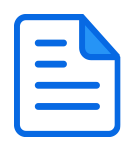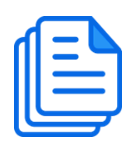外文翻译
原文
Managing staff training and GMP compliance
Author: Monika Brunn Hoffman La Roche
A case study is presented that describes how a software control system can ease the complex task of managing training needs across an international company, and improve GMP compliance by ensuring that employees are aptly qualified to perform their assigned tasks.
What are the three most important reasons for GMP deviations? A lack of GMP training, a lack of GMP training and a lack of GMP training! The root cause for GMP deviations most frequently listed in inspection reports is the personnel involved in API manufacture and quality assurance. GMP training for manufacturing personnel is essential, as defined in Chapter 2 Paragraph 2.9 of the EU GMP Guide and in 211.25 of the FDA c GMP Guide; however, GMP control is not always as good as it should be— as demonstrated by the increasing number of warning letters, import stops and other provisions by regulatory authorities in past years.
Well-qualified employees are an essential part of GMP, and training concepts and the compliance status of personnel are always within the scope of inspections. As such, requirements for qualifications, training and development of all employees involved in Gx P relevant operations must be met to ensure that employees can aptly perform their assigned tasks according to their position. The best way to accomplish this is through training programmes tailored to each employee's job. This should not just end with an induction programme, but continue with annual training plans and periodic retraining to ensure that an employee's knowledge and behaviour is maintained at the required level.
Training should be planned, scheduled, conducted and documented using a very systematic approach, particularly in large companies. In
Material Source: Managing training and compliance
2006, a publication by Schaffer/Schmidt described how a pharmaceutical company established key performance indicators (KPis) to calculate the ratio between the total
number of trainings planned/needed, and the total trainings conducted, which helped management to assess and assign the necessary resources. The overall conclusion of this publication was that a company-wide training management system is needed to manage the training needs in a pharmaceutical company. The administration of resources, as well as the involvement of the management, is a new requirement defined in ICH Q10 Pharmaceutical Quality Systems.
Planning isn't easy
To plan and monitor GMP training in a pharmaceutical company, a lot of operational information is required. In the past, companies often kept an archive of training certificates or lists of participants signed by each individual, or used spreadsheets, but
this approach may not be appropriate for a facility with well over 100 employees. Instead, many large companies are now implementing a software control system to monitor the GMP compliance status and training of their employees. Such a system is more than just a piece of software: it is a general approach to managing the complete process of GMP training, starting with assigning individual training needs to each employee, through to an efficient documentation procedure. The system enables management to easily identify training needs, provides reports regarding the overall training status and also enables the complete tracking of training conducted per employee, which is useful for regulatory requirements.
The following case study describes how a GMP training management system (Pharmschul; Concept Heidelberg, Germany) was introduced at Hoffman La Roche in Basel (Switzerland) to achieve the complex task of managing the GMP training of employees. The software linked with Roche's document management system (DMS) to provide up-to-date information about the status of relevant training documentation.
The case study
How to assign training to each employee
For a company the size of Roche, which has many different objectives for employees, such as global guidance or company-specific GMP standards, it is necessary to merge employees to groups either in organisational or functional areas. From there, appropriate training can easily be set up. On the other hand, however, there are also local requirements that are pre-defined for a specific job. Today, Roche creates groups and assigns profiles to them using Pharmschul to develop suitable trainings. Different roles and functional-based assignments can be combined to receive a eomplete set up for eaeh employee.
Operating a packaging line, for example, presumes the employee has very special and detailed knowledge of technical documents tailored to one unit. Using the control system software, the company groups documents to document profiles according to different needs, or attributes certain documents to a specific job profile. Once a new document version is available in the DMS, a new draft training record is automaticaily created by Pharmaschul, and the training coordinator can then create the new record for the assigned group immediately Different document profiles can be assigned directly to groups or persons, but the system can also connect document profiles to job profiles, which simplifies administration. It is also possible to group global guidance documents to dedicated global profiles, which can be applied to an entire organizational unit.
As Roche operates globally, employees will sometimes assume new responsibilities and training tor such employees must be adapted accordingly. In this case, the training manager can easily assign the new, appropriate functional group to the person. The employee's 'old' specific job profile can then be attributed to another staff member and the required training is immediately visible. An additional interface between Pharmaschul and Roche's human resources database also ensures that when an employee leaves the organisation, he/she is automatically removed from all profiles and all planned training sessions to avoid confusion.
We also use the profiles to prepare annual staff training plans, which are created and assigned to the relevant groups. A formal report
template is also available to print an annual training plan for a single employee, manually signed by line manager andemployee.
Making sure employees know about new or updated SOPs
Standard Operating Procedures (SOPs) are necessary to introduce GMP standards into company-wide quality systems, and all employees need to be informed when a new or updated SOP is published. While this is easy in a small company, it is a rather more complicated task in a global entity like Roche. Because of this, we also introduced an additional web-based front-end for Pharmschul, called Pharmschul WEB, which provides a validated solution for the completion of self-studies on procedures/SOPs, with electronic signatures.
When a new document in the DMS has been issued for training, the training manager attaches it to the relevant group, and an integrated email function then informs employees about the training. The email will contain a link to a web interface and the assigned document, which the employee can open, read and countersign with an electronic signature. In their personal screen, users can also obtain detailed information about their training status, including performed, planned and open trainings. We also use the web interface for refresher information about GxP and regulatory requirements or issue-driven training, such as retraining in response to deviation, defects or complaints.
译文
员工管理培训和GMP认证
资料来源: 管理培训和规则 作者:莫妮卡·布鲁恩·霍夫曼· 拉罗什 一个案例研究提出描述了一个软件控制系统如何能缓解跨越国际管理公司的培训需求复杂的任务,完善的GMP,以确保员工恰当资格执行其指定的任务规定。
GMP产生偏差的三个最重要的原因是什么?缺乏GMP培训,缺乏GMP培训还是缺乏GMP培训!对于GMP的偏差的根源最常见列在检验报告中是API生产和质量保证的相关人员。 GMP生产人员的培训是非常必要的,因为在第二章定义规定了欧盟GMP指南2.9和FDA cGMP指南211.25,但GMP的控制并不总是那么好,它表现为越来越多的证明警告信,停止进口和在过去几年的监管当局
的其他规定。
高素质的员工是GMP的重要组成部分,培训理念和合规管理人员都在检查的范围之内。因此,任职资格,培训和所有员工的发展在GxP所涉及的有关业务必须得到满足,以确保雇员能够根据自己的立场恰当地执行分配的任务。为实现这一目标的最好的方式是通过培训计划针对每个员工的工作进行培训。这不应该只是一个适应课程结束,而是继续与年度培训计划和定期电子培训,以确保雇员的知识和行为是在需要的水平。
培训应使用一种非常系统的方法加以规划,计划,开展和记录,特别是在大公司。2006年,沙弗/施密特出版了描述了如何建立一个制药公司的关键绩效指标(KPI)来计算的计划/需要培训总人数的比例,总培训的进行,这有助于管理,评估和分配必要的资源.本刊物的总的结论是一个公司范围的培训管理体系是需要管理的培训以及对制药公司的需求。对资源的管理,以及对管理的参与,在ICH Q10的制药质量体系定义中是一项新的要求。
规划不容易
在一家制药公司进行规划和监测GMP培训,很多业务信息是必需的。在过去,公司保持着经常的培训证书或签署的每一个人,或使用电子表格与会者名单存档,但这种方法可能不是一个适当的设施和超过100名员工。相反,许多大公司正在实施一个软件控制系统监测GMP合规管理状况和员工培训。这样的系统不仅仅是一个软件:它是一个普遍的方式来管理全过程的GMP培训,并分配到个人的培训需求出发,通过对每个员工都有一定效用的程序文件。该系统使管理人员轻松地识别培训需求,提供全面的培训有关情况的报告,也对每名雇员培训进行完整的跟踪,这是有效的监管。
下面的案例研究描述了一个GMP培训管理系统在巴塞尔(瑞士)通过Hoffman La Roche的引入,实现了管理员工的GMP培训复杂的任务。软件与罗氏公司的文档管理系统(DMS)的,可提供最新的有关培训信息的文件情况。
案例研究
怎样分配每个员工的培训
对于罗氏公司的规模,这对诸如全球指导或公司的具体GMP标准的员工相对是许多不同的目标,是要合并到无论是在组织或职能领域组别的雇员。从那里,适当的培训可以轻松地进行设置。另一方面,然而,也有说是预先定义的本地特定的工作要求。今天,罗氏集团和创建配置文件分配给他们使用并制定适当的培训。不同的角色和功能为基础的分配可以结合起来,为每个员工接受较完整的培训。
经营包装生产线,例如,假定员工具有非常特殊和详细的针对一个单位的技术文件的知识。使用控制系统软件,该公司到文档配置文件组的文件,根据





